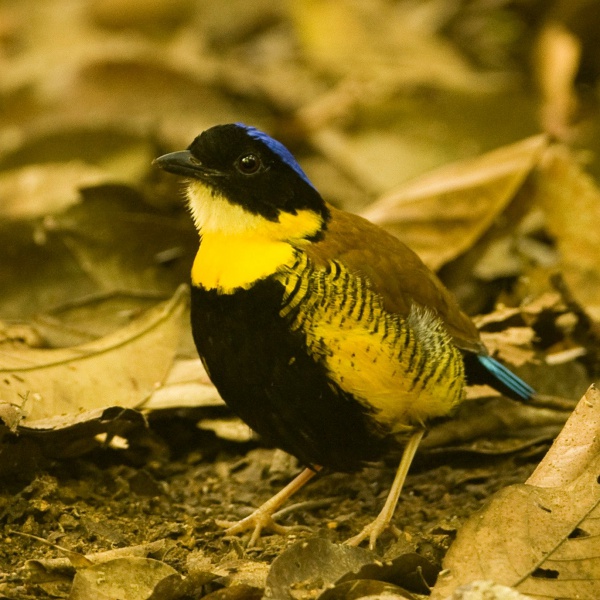Facts About Gurney's pitta
Gurney's pitta is a striking, medium-sized bird native to the Malay Peninsula, particularly Myanmar. This bird, known scientifically and colloquially as Gurney’s pitta, derives its name from John Henry Gurney, a British banker and avid bird enthusiast. Distinguished by its colorful plumage, Gurney's pitta primarily feeds on slugs, insects, and earthworms.
First described by Allan Octavian Hume in 1875, the bird was originally classified as Pitta gurneyi. However, molecular studies in 2006 prompted its reclassification into the genus Hydrornis, a group first introduced by Edward Blyth in 1843. Despite this taxonomic shift, the species name "gurneyi" continues to honor John Henry Gurney's contributions to ornithology.
Male Gurney's pittas are particularly eye-catching, adorned with blue crowns, black-and-yellow underparts, warm brown upperparts, and black heads. Conversely, females feature a brown crown and buffy-whitish underparts.
Sadly, Gurney's pitta is endangered, mainly due to extensive deforestation in southern Burma and peninsular Thailand. Once thought to be extinct after 1952, it was rediscovered in 1986. By 1997, there were estimated to be only nine pairs remaining, rendering it one of the rarest birds in the world. However, surveys in Myanmar in 2003 located the birds at multiple sites, prompting the IUCN to reclassify its status from critically endangered to endangered. Further research in 2009 identified additional territories, indicating a larger population than previously believed.
In Thailand, birdwatchers have dubbed Gurney's pitta the "most wanted bird" highlighting its allure and rarity.

 Thailand
Thailand